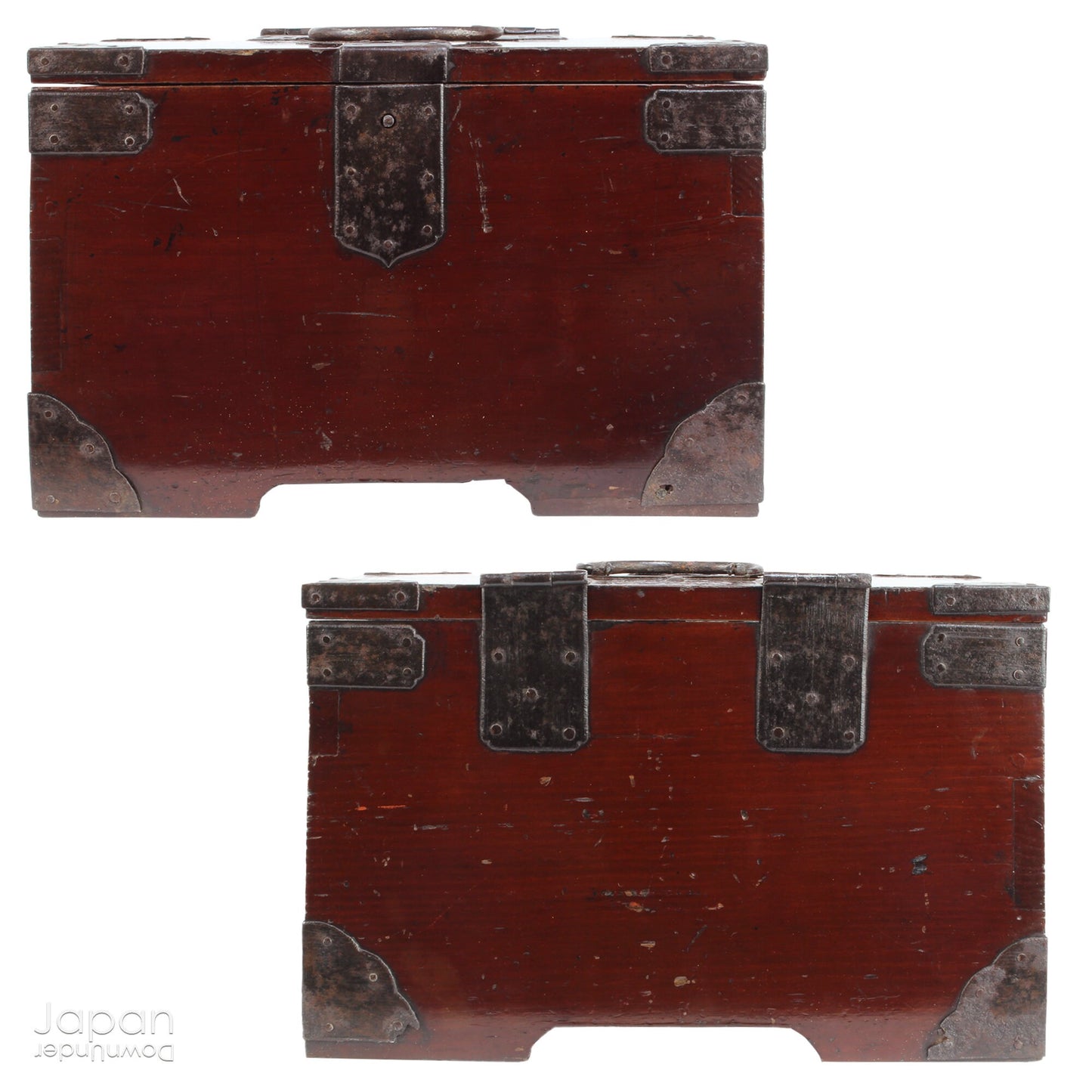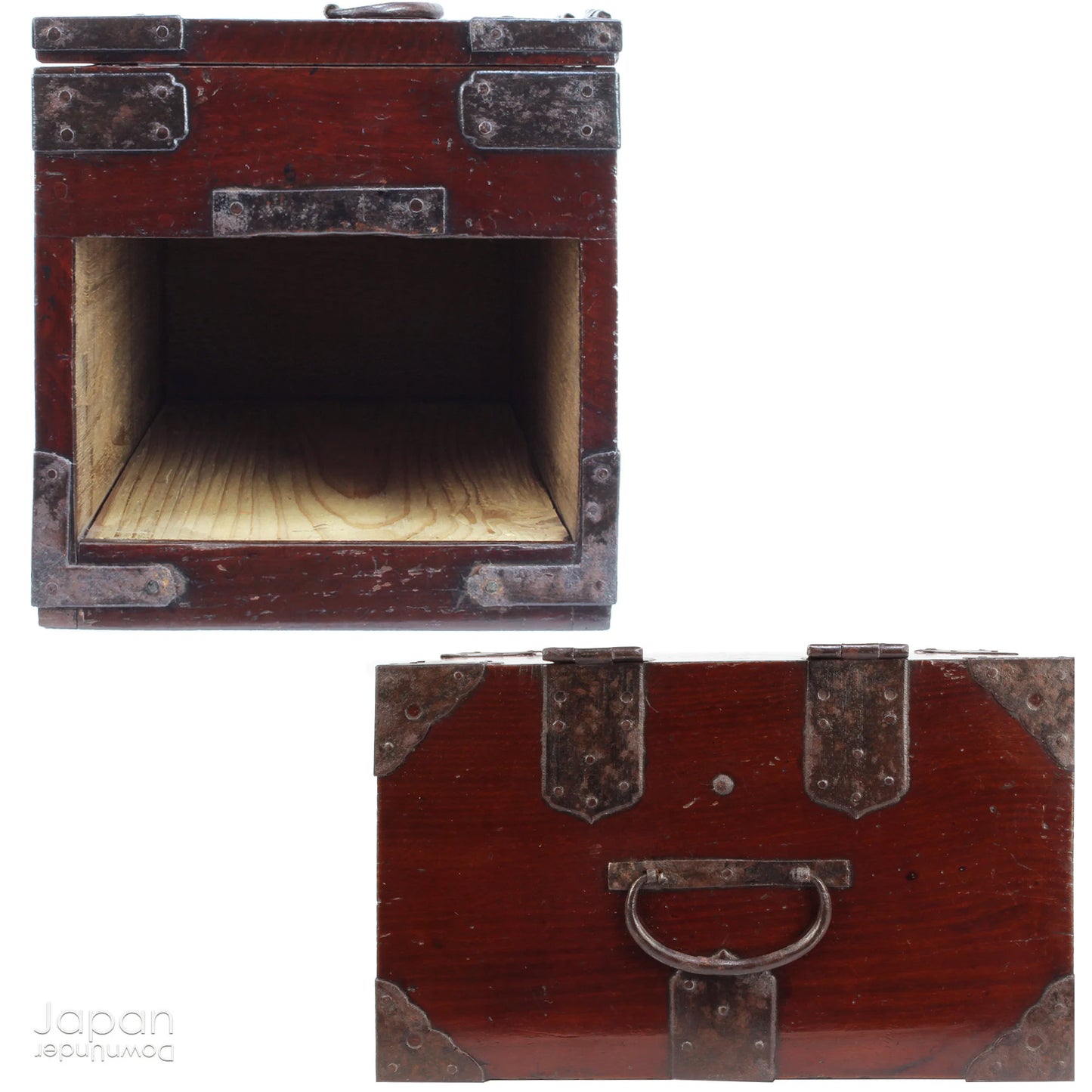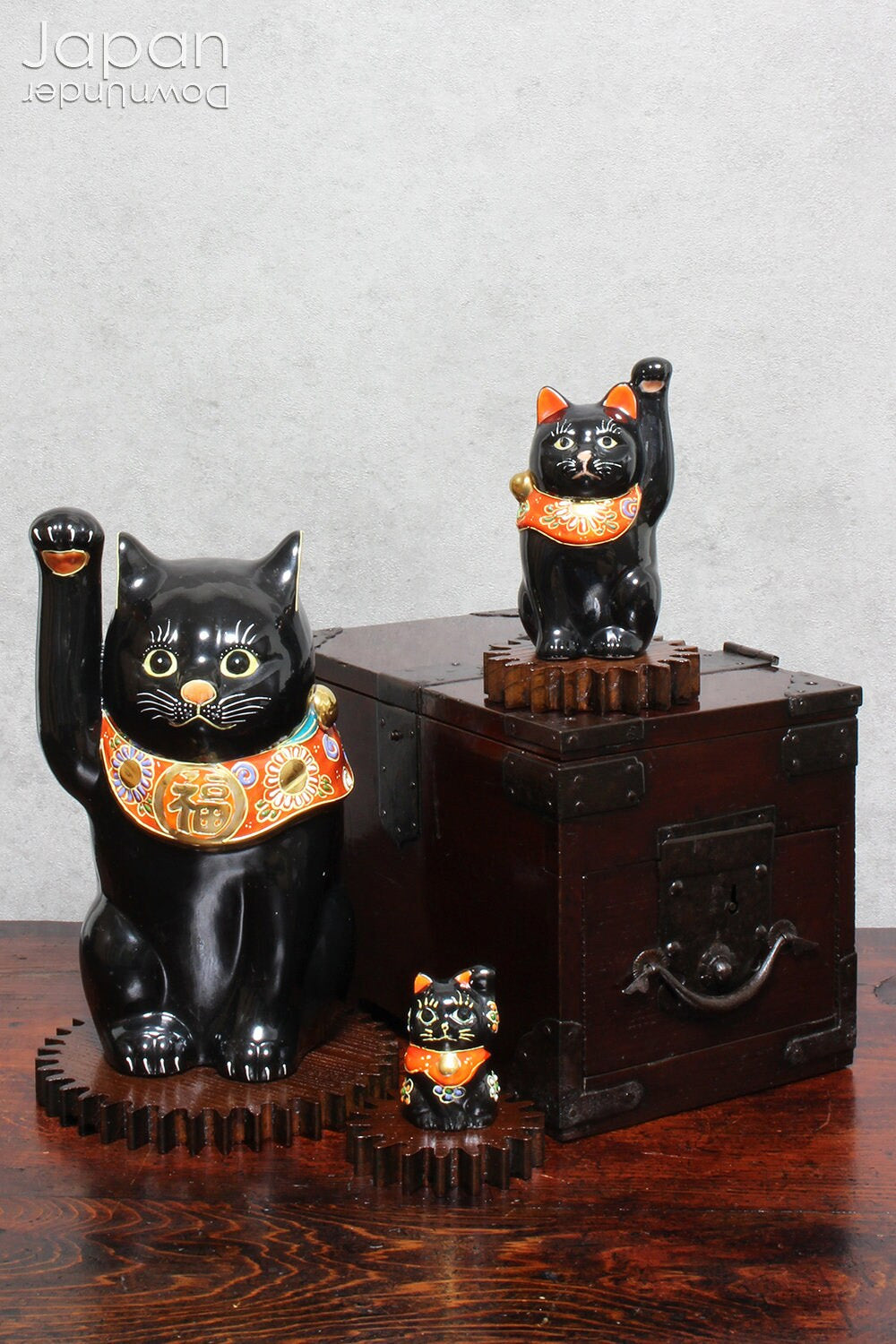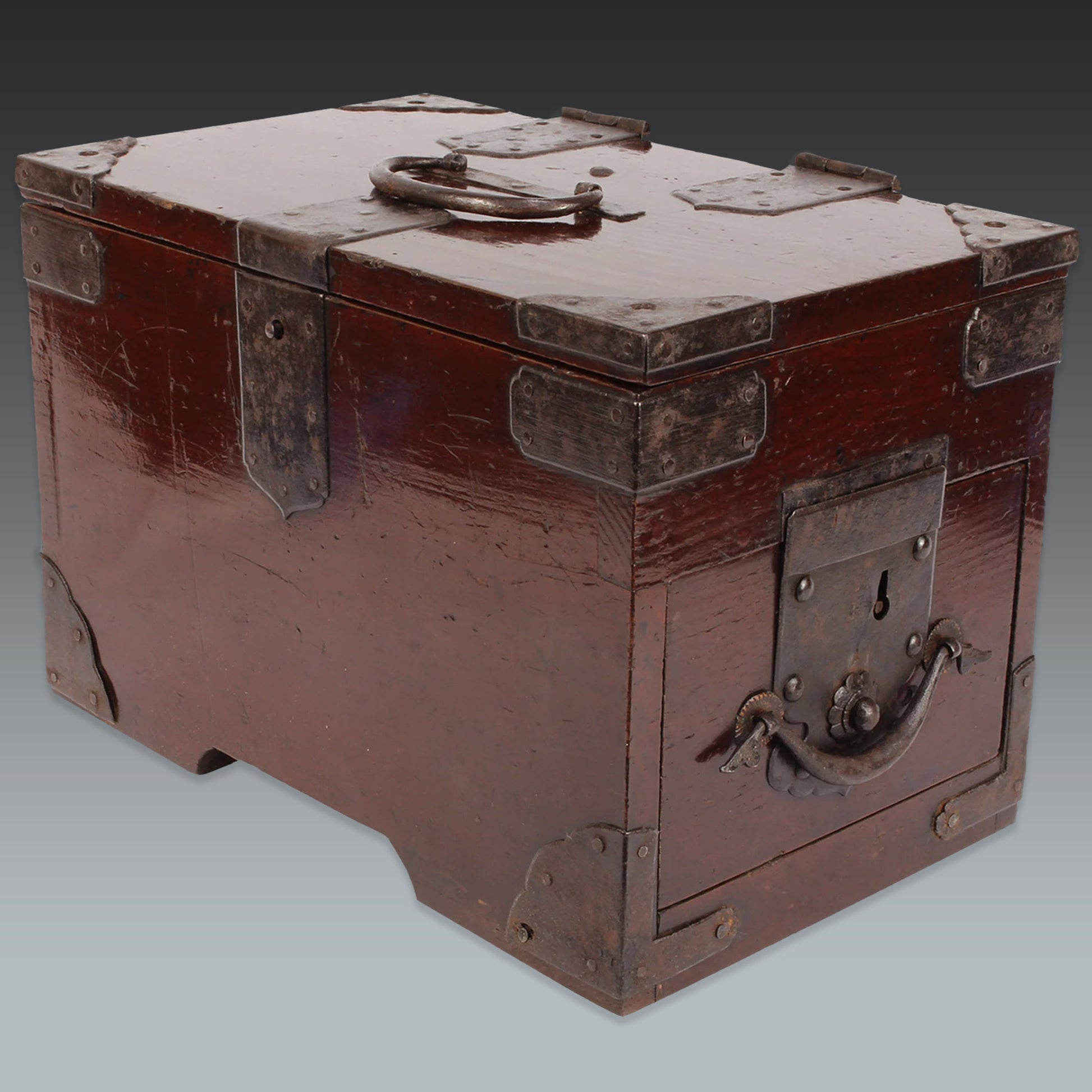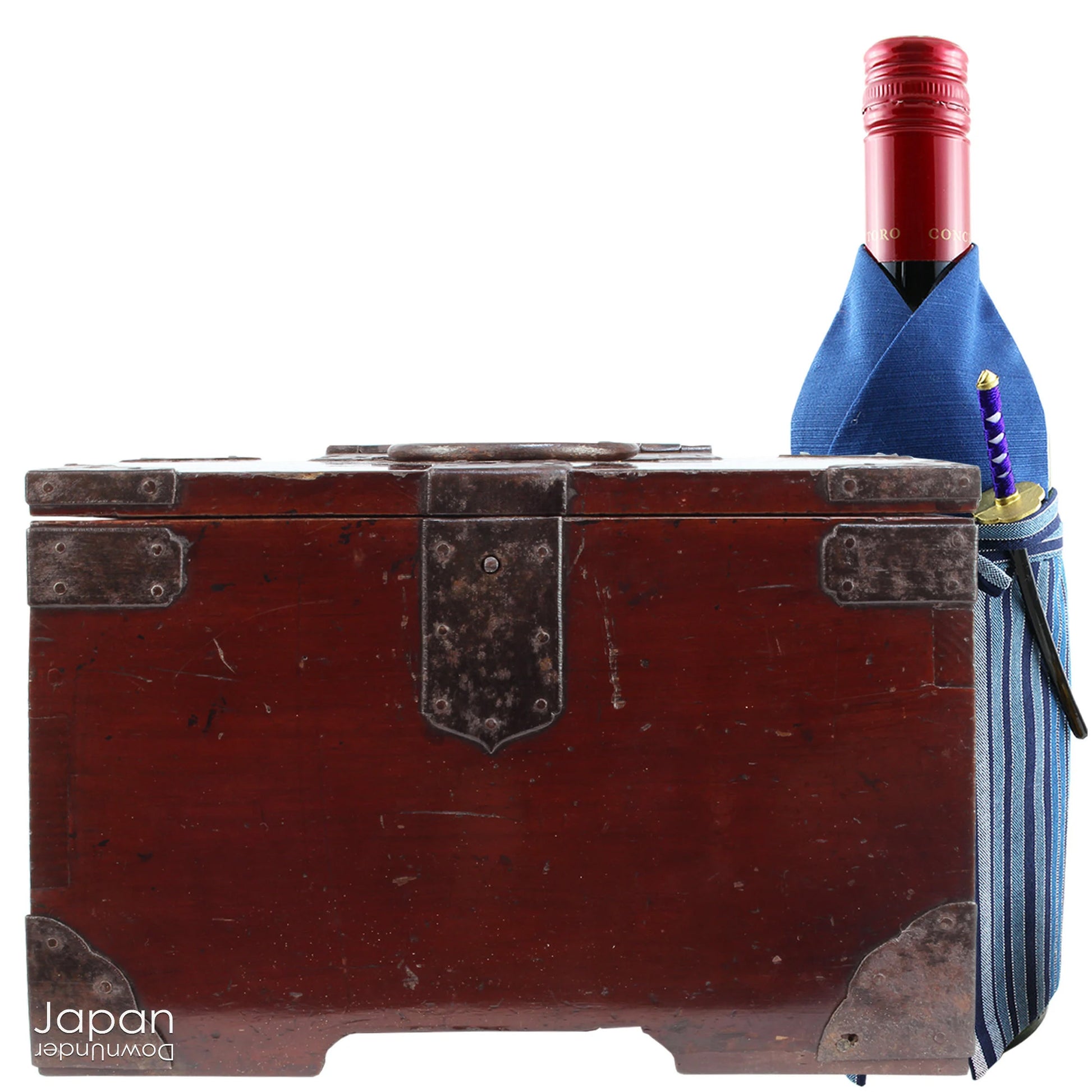My Store
medium-sized japanese antique accounting chest - beautiful lacquer finish, perfect for small items
medium-sized japanese antique accounting chest - beautiful lacquer finish, perfect for small items
Couldn't load pickup availability
Love Japanese Style Like We Do
Add a touch of timeless elegance to your decor with this exquisite Japanese antique Suzuribako (accounting box). This medium-sized chest is a stunning blend of functionality and artistry, showcasing beautiful lacquer work and delicate metal fittings. A perfect way to store your cherished small items in a piece of history that doubles as an eye-catching conversation starter.
A History of Beautifully Crafted Chests:
The Japanese developed a large range of boxes for safekeeping valuables, documents, and personal belongings in both homes and shops, amongst them the suzuribako. This box was a small, portable lightweight chest that was used in shops during the Edo period and Meiji era to store ink, an ink stone, writing brushes, bills and receipts. The chests name is derived from ‘suzuri,’ the ink stone against which the sumi ink stick is rubbed with water to form ink. Suzuribako most often had a hinged lid with a small lock. There was a thin drawer for storing brushes and other larger drawers for storing various accounting items. Sometimes there was a thin drawer with a slide-out abacus. The small chest was never used to store money. Money was stored in the very heavy zenibako (money chest).
Crafted from the Finest Materials:
This particular chest is made from keyaki (zelkova) wood, one of the most prized hardwoods in Japan, known for its durability. The chest is finished with a glossy lacquer in a beautiful reddish-brown hue that highlights the natural grain of the wood.
The accounting box is adorned with elegant metal fittings, including a large lock on the front drawer with an accompanying key, and a decorative warabite handle. The metal reinforcements at the corners and joints enhance the chest’s strength and durability, while the metal carrying handle on top allows for easy portability.
In terms of design, this box is both practical and charming, featuring one spacious drawer for writing implements and a hinged lid that opens to reveal space for the ink stone. The box’s catch on the left must be pressed down while pulling the lid handle to the left to open.
Condition:
Dating back to the late Meiji era, this box is in good structural condition. While it exhibits the character of age with surface scratches, small dents, and ink stains, these imperfections only add to its rustic, mingei folk art appeal - reflecting the charm of authentic, everyday Japanese craftsmanship.
A Unique Addition to Your Collection:
Whether you’re an avid collector of Japanese mingei folk art or simply seeking a special piece to store your most treasured items, this Suzuribako is a stunning choice. Its rich history, fine craftsmanship, and functional design make it a standout addition to any space.
- box measures around 16.5 cm (6.4”) tall x 15 cm (6”) across x 24.5 cm (9.6”) deep.
- weighs 1,652 gm.
(listing for box only)
SHIPPING INFORMATION
- please read our shipping notes in shipping policy.
- we use recycle packaging wherever possible and wrap for safety, rather than appearance!
ABOUT OUR VINTAGE, ANTIQUE AND OTHER ITEMS
We list pieces we feel are worthy of display. There may be scratches, dents, fading and signs of wear and tear. We try to explain the condition of each item exactly, but may miss something.
Information regarding the item and it’s age is obtained from dealers and our personal research. We do our best to give you the correct information but please be aware that we cannot guarantee this information.
Please message us prior to purchase with any questions you may have about our products.
ABOUT JAPANESE ANTIQUE FURNITURE
The roots of furniture production in Japan were function. Mastery and skill were evident in Japanese antique furniture but it was conceived of need and was more a folk craft than a fine art. Cabinetry craft developed in response to the demand for useful everyday containers, trunks and chests for totally functional purposes and that is where the the true beauty of Japanese furniture lies.
The Japanese lived on tatami mats in small houses. Their artistic aesthetic emphasized minimalism and decorative furniture and personal possessions weren’t acquired like in the West. Antique furniture was basically a large range of storage chests from small sewing boxes to very large chests for storing futons.
It was the lower classes, the merchants, artisans and farmers who created the greatest demand for furniture, for use in their homes, shops and farms. Wherever a need existed, a corresponding cabinet or tansu was developed, leading to the vast array of styles, shapes and sizes in Japanese furniture.
In the Edo and Meiji era clothing tansu with drawers for kimono (isho dansu), sewing boxes (hari bako), vanities (kyodai) and cabinets for tea utensils (cha dansu) and crockery (mizuya dansu) were important items in the home. Wooden safes (zeni dansu) guarded valuables in homes and shops. The upper classes, descendants of samurai families, would have had special order sword chests (katana dansu) and writing desks. Those studying Noh had a costume trunk and a small chest of square dressers for storing masks (nomen dansu).
Sea captains had special chests for storing valuables and documents on board (zeni dansu) The village chemist had a medicine chest (kasuri dansu) with many small drawers. The barber had a tall thin chest (dogu bako) for combs , razors and scissors. There was a special chest for those using hand tools (kanagu dogu bako). A merchant had a small box to store name seals (han bako) and a box to store an abacus, ink stone and brushes (suzuribako) for bills and receipts. Lamp oil was delivered in an oil peddlers box (abura gyosho hako).
These are just a sample of the wonderful array of functional Japanese furniture that can still be used today for storing any items relative to your lifestyle, while at the same time, creating a beautiful interior accent and a reminder of days gone by.
MINGEI
Mingei are the tools and utensils that were used daily by the common people in Japan. They were inexpensive, simple and functional. Usually produced by hand, in large quantities, their artists were anonymous. They became representative of the local area where they were produced.
The word Mingei combines ‘min’ meaning common people and ‘gei’ meaning art - the art of the common people. It was coined by the Japanese philosopher Sōetsu Yanagi. He found beauty in ordinary crafts for daily use and argued that true beauty could be found only in the objects made by unknown people, in a spirit of selfless innocence and in close harmony with nature.
Share

